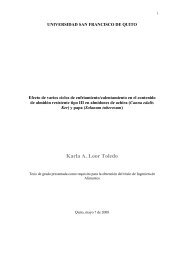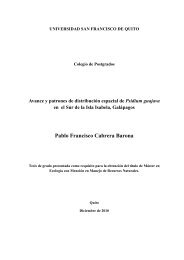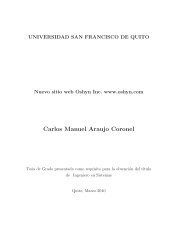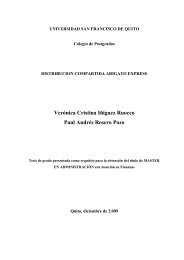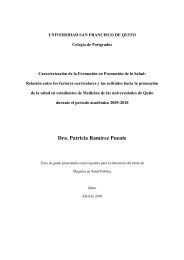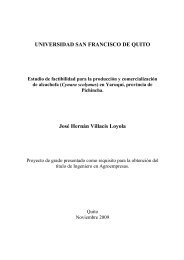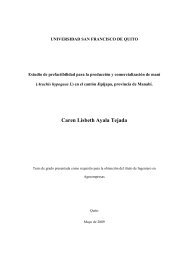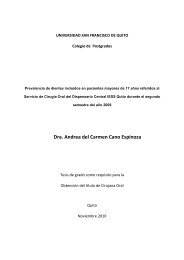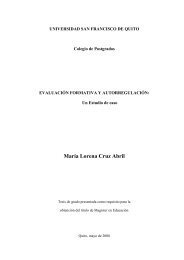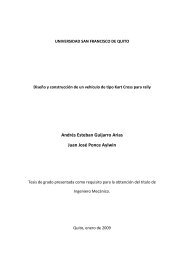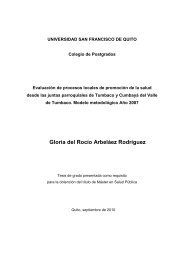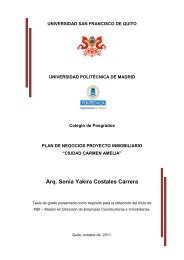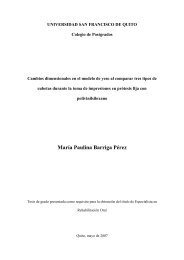Myriam Elizabeth Saavedra López - Repositorio Digital USFQ ...
Myriam Elizabeth Saavedra López - Repositorio Digital USFQ ...
Myriam Elizabeth Saavedra López - Repositorio Digital USFQ ...
You also want an ePaper? Increase the reach of your titles
YUMPU automatically turns print PDFs into web optimized ePapers that Google loves.
(sub-section 4.3.2).<br />
The presence of deviations between all the estimates and the Kpois(r) curves in ‘a’ panel suggests<br />
spatial clustering because the various estimate curves tend to be greater than the theoretical curve<br />
(Cressie, 1993). In the ‘b’ panel, the observations curve is under the CSR simulations envelope,<br />
but when the radius is equal to and greater than 297 meters, the observations curve is greater than<br />
hi(r) curve, hence the null hypothesis cannot be accepted and it is possible to have spatial clustering<br />
with radiuses equal to and greater than 297 meters (see definition of Simulation Envelopes). Another<br />
possible conclusion could be that there are dependent interactions between the points inside the ball<br />
when radiuses are equal to or greater than 297 meters.<br />
4.3.4 First and second moment characteristic analysis for I<br />
To support or to discard the results from the Estimates of the Empty Space Function F and of the<br />
Nearest Neighbour Distance Function G (First Moment Characteristic), it is recommended to apply<br />
the Estimate the Function J in the spatial analysis of the data set. With the same criterion, it is<br />
also recommended to use the Pair Correlation Functiong to support or to discard the results of the<br />
Estimate of the Function K (Second Moment Characteristic).<br />
4.3.4.1 Estimate the function J According to section ‘3.4.3.’ and formula (19), the J (r) function<br />
of a stationary point process is defined as: J (r) = 1−G(r)<br />
1−F (r) where G (r) is the nearest neighbour distance<br />
distribution function of the point process and F (r) is its Empty Space Function. For a completely<br />
32



